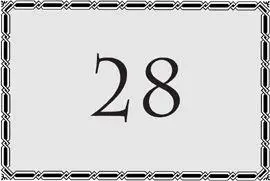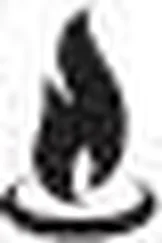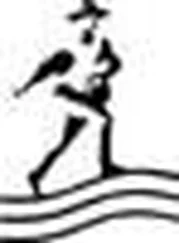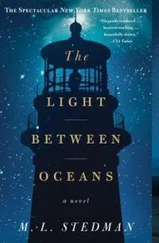The line beeped.
“Hold on a sec.”
As Larabee clicked over to answer the incoming call, I considered the implications of a bone fragment in a victim’s scalp. A fall? A blow? Some sort of hair accessory? Before I got far, Larabee was back.
“Gotta go. Double suicide. Myers Park of all places. Thought the gentry were too well-bred to off themselves with rat pellets.”
“I’ll be in shortly.”
“Good. You’ve got a skull from a crapper.”
I hung up, totally pumped. About the DNA, not the latrine find.
When I left Charlotte, the hit-and-run case was going cold fast. Now there were leads. The names of men who’d had sex with the victim. Forced? For love? For fun? For money? It didn’t matter. These men knew her.
I phoned Slidell, got voicemail. Left a message telling him to call me as soon as possible
I called ICE, figuring this new information might gain some traction with Luther Dew. Voicemail. Another message.
Irrational, but there are certain tasks I despise so much I conjure endless excuses to avoid them. Grocery shopping. Flossing. Car servicing.
Topping the list is unpacking luggage. Mrs. Flowers’s advice was dead-on. Though for different reasons. Rational ones. But I knew I’d loathe myself later if I put it off.
Despite being anxious to see what Larabee had left on my desk, I went to the bedroom, dumped my duffel, and began to triage. Clothes to the laundry. Toiletries to the bathroom. Books, papers, and anthropology materials to the office.
I turned the duffel inside out in the yard, then stowed it on a shelf in the downstairs closet. Pleased with myself, I took a break to check my e-mail.
Katy had written to say she was glad I’d come. Opined I would forever be the only mother in her unit to do so. She also assured me she’d be careful.
Nothing from Ryan.
Why did I even bother to look?
Hurrying back up to the bedroom, I turned my attention to the backpack. I’d barely begun when the phone rang.
Thinking it was Slidell or Dew, I picked up without checking caller ID.
Click.
Dial tone.
Lejeune, now here. Twice in two days.
Nice.
Back to the pack. First I emptied the main compartment. Cap, jacket, sunglasses, books, a neck pillow I’d bought during the flight delay in Istanbul. The little goody bag the airlines give out in business class.
Then I worked my way through the outer pockets. Of which there are a bazillion on a military backpack. My efforts produced hand cream, batteries, two melted protein bars, at least a dozen used earplugs, and a whole lot of sand.
Ten minutes after starting, I ripped loose the last Velcro strap and reached into a side pocket, expecting nothing but wadded tissues. My hand closed on something that felt like plastic.
Curious, I withdrew the object.
Moments passed as I studied the thing, bewildered.
I turned it over.
My puzzlement grew.

I WAS STARING AT A photograph, faded and worn around the edges. Someone had placed it inside a clear plastic sleeve that was badly scratched.
Had Katy put the photo in my pack? Stashed it while I wasn’t looking?
At first I thought that must be the answer. I wasn’t focusing on the scene depicted, just on the fact of the picture’s existence among my belongings.
Then I noticed a few technical details. The photo measured three by five and was printed on paper with a weight and finish that suggested a source other than a home computer or drugstore processor.
A recently stored memory flared. A comment about backups.
Of course. The print had been made with an instant camera, a Polaroid or some similar brand.
I brought the sleeve close to the window and studied the pic.
The image was grainy and slightly blurred, snapped quickly, or when the lens was in motion. Centered in it was a group of Afghan girls in head scarves and traditional dress.
I counted. Six in all. Five with arms linked, eyes all giggles and shyness. The sixth girl stood behind the group, forking “devil’s horns” over the head of another.
That seemed wrong. Weren’t devil’s horns a very Christian reference? Where had these kids learned it? Had they seen Western troops do it?
Five of the girls were facing directly into the lens. Though their heights varied, each appeared to be in her early teens, probably twelve to thirteen. The sixth girl was partially obscured but seemed a bit taller than the rest. All six had dark eyes and glossy black hair crossing their foreheads.
Adolescent girls caught in a playful moment. The subject matter argued against Katy as the source. Unless she’d taken the picture while out with her unit.
But Katy would use a smartphone or a digital camera, not an instant. And why sneak the photo into my pack? It seemed an odd memento. And, if that was her intent, why not simply give it to me?
My mind shifted from the question of how I’d gotten the picture to the question of its provenience. Afghanistan? Probably.
The girls stood a few yards from the corner of a modest stone house not unlike those I’d seen in Sheyn Bagh. Beyond the house, arid desert stretched in all directions. On the far left, a distant rock formation needled into a cloudless blue sky, dark and featureless, all detail lost to the camera’s limited depth of field.
The moment could have been captured at any one of a hundred villages across Southwest Asia. Perhaps a thousand.
My mind shifted again. To the photographer.
Slim chance a local farmer would possess an instant camera. But it was possible. A gift from overseas. Maybe from one of the allied forces who’d visited the village.
Perhaps the photographer was a U.S. service member. Maybe picture taking was a ploy used to schmooze the locals. To win hearts and minds, as the military put it.
I moved my gaze from face to face. The girls looked excited but shy, the way kids are around strangers. That tracked with the soldier theory.
I flipped the sleeve and read what was written on the back of the print. A list, inked in block letters, all caps.
LAILA. KHANDAN. MAHTAB. ARA. TAAHIRA. HADIYA.
Six girls. Six names.
Definitely not Katy’s handwriting. Her scrawl looked like tracks left behind by a snail on a bender.
What intrigued me was the fact that the names were written in English. Pashto and Dari both use versions of the Persian alphabet.
Perhaps a soldier or marine had taken the shot, then written the names as the girls provided them. That also tracked with the hearts-and-minds theory.
I pictured the scene. Wondered. Had adults looked on in silent disapproval? Had they enjoyed the smiles of their children? Had the girls agreed to a quick pic while off the parental radar?
I flipped the photo back and forth. Faces. Names. Did the order of the names match the lineup in which the girls stood? Was that order meaningful?
To which girl had the photo been given? Had she been allowed to keep it? Or had it been taken from her?
Another possibility. Had the soldier kept the photo, perhaps to mail to family back home? To give them a sense of the place. To assure a mother or a wife the locals were just ordinary people.
Or perhaps photos were taken for record keeping. More hearts-and-minds maneuvering. On the next sweep through the village, ask about the kids by name. Every parent loves that.
But it was all speculation. And no theory explained how the photo had ended up in my pack. At least I could eliminate or confirm one suspect.
Descending to the study, I slipped the print from its sleeve, photographed it with my iPhone, and attached it to an e-mail. Then I wrote the following note to Katy.
Читать дальше











